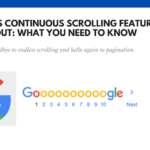Visitors come to your site with the expectation of getting the relevant information about the subject they are searching on. When they find your site via the search engines or any other source ranking for the relevant keyword the first and foremost search on the website found is for the content and information about it.
Hence, we give a lot of importance to SEO and landing pages. Getting the targeted visitor is the first step. The possibility of this visitor getting converted to an enquiry depends on many on page factors of the landing page.
Companies usually work a lot on the SEO and other online marketing activities to get the visitor to the site but the layout and design many times is neglected and does not have a focus on making the visitor spend more time per page and visit more pages.
The visitor will spend more time on the landing page only if the relevant content is available in the form of text, images and videos if necessary. He will go ahead and click to view more pages if the site navigation is prominent and every page has links to every other page on the site. The ease of navigation is the key to lowering the bounce rate.
Information architecture (or IA) is the art and science of defining the structure, organization, navigation, space for Ads. and indexing of a Website.
Information Architecture , Web Design, On-Page SEO and Content Development have to all work in cohesion and the team members responsible for each of these aspects most of the time will have difference of opinion in order to put their best foot forward but despite all the differences the final conclusion has to have the best of all the aspects . The end result has to be user focused and should also offer the content to the search engine bot with ease.
Many websites start small with limited content but gradually go to become more and more content rich. Hence, the scope for the growth of the website in terms of additional links to be added to the navigation structure and any other additional aspect to be added should be taken into consideration to enhance the website with time qualitatively. Else it results into a chaotic situation resulting into a lot of clutter on the webpages and an ultimate decision of redesigning the website.
Just as an architect designs the building layouts first keeping in mind the aesthetics, strength, natural calamities, lighting, other essential supplies and makes the optimum use of the area, the IA has to have a focus on the visitor and design the web pages accordingly.
The main elements of any web page are as follows:
- The Company Logo
- The Tag Line Of The Company
- H1 Headings
- Breadcrumb navigation
- Search form
- Links to other companies where you have a presence on
- Social Media Sharing Buttons
- Global navigation links for the site
- Local content navigation
- Primary page content
- Contact Details
- Copyright And Privacy statements
- And of course the relevant content of the page
Once the rough layout is finalized , utilizing every area of the page to attain and retain maximum attention of the visitor is crucial hence the placing of every element of the web page is very crucial.
According to the poynter eye tracking study the visitors usually start reading from the left most text and the eye-balls move further as follows:
The optimum architecture does not get worked out at the very first go. There have to be a series of testing and tweaking to come to a conclusion and a layout to be used for a long time.
The analytics play a major role in giving the details needed to take the important decision. Each and every metric of the analytics report conveys the absolute measure of the same but the co-relation to each and other is more important than the stand alone data. An example for this is explained in one of our post on http://blog.webpro.in/2010/12/high-bounce-rate-landing-page.html
A constant tracking and monitoring is required for SEO – to see if the Search engine robots are getting their material and the same tracking and monitoring is required to check if the visitors are retaining their interest by spending more time and navigating to other pages to read more and finally are they responding to the call to action of the page, i.e filling the form, contacting the company, buying the product or asking for more information, whatever the case maybe.
If the targeted, new visitors are responding to the call to action on the page and online sales and the ROI from the SEO money invested is on an increasing trend then I think the purpose of having a website is being achieved . But, there is always scope for improvement.











